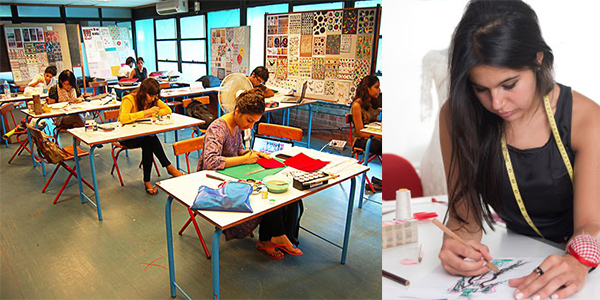Textile Design Career
[one_half][ads1][/one_half]Textile Design Career – Textile designers create two dimensional designs that can be used, often as a repeat design, in production of knit, woven & printed fabrics or textile products for Textile Design Career. Textile Design Career refers to the art of design of process of designing the different structures & different looks of fabrics, or textiles. The majority of the textiles have different and unusual characteristics, even though it may seem very simple to the normal eye. Textiles come in a wide array of designs, fabrics, colors & patterns etc.
Textile Design Career is the initial & most important aspect of Textile Industry. Textile designing would comprise of both surface and structural designs. Structural designs are made through weaving, knitting, crocheting or pressing together fibers (process is known as felting). Surface Designs are made by dyeing, texturing, printing or embroidering, etc.
Textile Design Career Job profile
Textile Designers may work with teams of designers & purchasing staff for design agencies or as a freelancer for Textile Design Career. Textile designers need to produce marketable designs, and also attend trade shows. Textile designers need to understand the fabrics and their behaviors and properties extremely well.
As a Textile designer works in both industrial & non-industrial parts of Textile Design Career, They often specialize in or work in a specialize context.
The major areas of Textile Design Career are
- Interiors (soft furnishings, upholstery & carpet).
- Clothing fabrics (Specialist or Fashion).
Some of their day-to-day activities include
- Producing sketches, designs & samples for presentation to customers.
- Working with specialist software or computer aided design software to develop new designs.
- To experiment with fabric, color and texture.
- Approving and assessing production standards and completed items.
- To work out design formulae for a group of samples.
Skills Required
- Textile designers must be creative, This is the most vital skill for any designer to achive Textile Design Career.
- A designer must have a keen sense of observation and must be able to pay attention to detail. Detailing is a very important aspect in this type of profession.
- They must be able to draw well, previously by hand, in these days, By the use of computer aided design software.
- They must have basic computer operating skills and should be efficient and good at using computer aided designs.
- Weaving, stitching and sketching skills are also very useful in this profession.
- Since it is an ever growing and ever changing field, A textile designer must stay up-to-date about all the latest fashion and textile trends.
- Very well understanding about fabrics, colors, design and texture.
- Since a textile designer will have multiple tasks at hand, He/ she must be very well organized.
- Must be able to work under pressure at times & meet deadlines.
- Must be well equipped to handle prints, embroideries, weaves.
- He/ She should be well versed in design language
- These days, unlike in the olden days, A textile designer must also work according to the well being of our society and environment in general.
Salary Packages
- One may start with a well established designer with a paid/ unpaid internship and assisting him / her.
- Upon joining the industry as a fresher, One may command a salary of 10,000 INR to 15,000 INR a month.
- For students passing out from reputed and prestigious institutes, A Fresher textile designer may earn upwards of 20,000 INR a month.
- In export houses, An experienced textile designer may earn a salary of 20,000 INR to 30,000 INR a month.
Job Prospects
- ATextile Design Career can be employed in Garment, home furnishing, interiors, fashion, among other industries.
- A Textile designer may also work as style directors, design writers, independent designers, fashion critics, teachers.
- The Textile industry in India is evolving from power loom, handloom, and craft sectors to newer areas like automobile & paper industries.
- There are also many opportunities in Government owned industries or Government sponsored industries , such as khadi, jute, handloom, silk, and craft development organizations.
How Do I get there ?
- Many universities & colleges in India offer diploma, certificate, graduate & postgraduate courses in Textile designing.
- For Diploma and graduate courses, The minimum qualification is 10+2.
- For certificate and postgraduate courses, the minimum qualification is a Bachelor’s degree in Textile design or allied subjects.
Some of the courses in India
- Diploma in Textile design.
- Diploma in textile printing.
- Advanced diploma in textile design.
- advanced diploma in textile printing.
- Graduate diploma in Textile & Apparel design.
- Post graduate Program in Garment Manufacturing Technology.
- Post graduate Program in Knitwear Design Technology.




